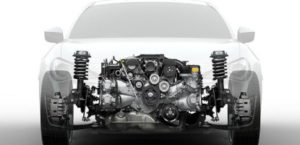The 1.6-liter Kia A6D engine was assembled at the factory of the Korean concern from 2001 to 2005 and was installed on the Rio, Sephia and Shuma models, a similar S6D was installed on the Spectra and Carens. Both of these power units in their design are only clones of the Mazda B6-DE engine.
Kia engines of its own design: A3E, A5D, BFD, S5D, A6D, S6D, T8D, FED, FEE.
Specifications
| Production years | 2001-2005 |
| Displacement, cc | 1594 |
| Fuel system | distributed injection |
| Power output, hp | 100 – 105 |
| Torque output, Nm | 140 – 145 |
| Cylinder block | cast iron R4 |
| Block head | aluminum 16v |
| Cylinder bore, mm | 78 |
| Piston stroke, mm | 83.4 |
| Compression ratio | 9.5 |
| Features | DOHC |
| Hydraulic lifters | yes |
| Timing drive | belt |
| Phase regulator | no |
| Turbocharging | no |
| Recommended engine oil | 5W-30 |
| Engine oil capacity, liter | 3.4 |
| Fuel type | petrol |
| Euro standards | EURO 3 |
| Fuel consumption, L/100 km (for Kia Shuma 2002) — city — highway — combined |
10.5 6.5 8.0 |
| Engine lifespan, km | ~240 000 |
| Weight, kg | 140.2 |
The engine was installed on:
- Kia Rio 1 (DC) in 2002 – 2005;
- Kia Sephia 2 (FB) in 2001 – 2003;
- Kia Shuma 2 (SD) in 2001 – 2004.
Disadvantages of the Kia A6D engine
- This is a simple and reliable motor, and its problems are from wear and the quality of components;
- The timing belt resource usually does not exceed 50 thousand km, and when it breaks, the valves bend;
- From cheap grease, the oil pump valve can wedge and hydraulic lifters knock;
- Often there is an oil burner after 200,000 km due to wear of rings or caps;
- A lot of trouble is associated with a short-lived cylinder head gasket and ignition system failures.






